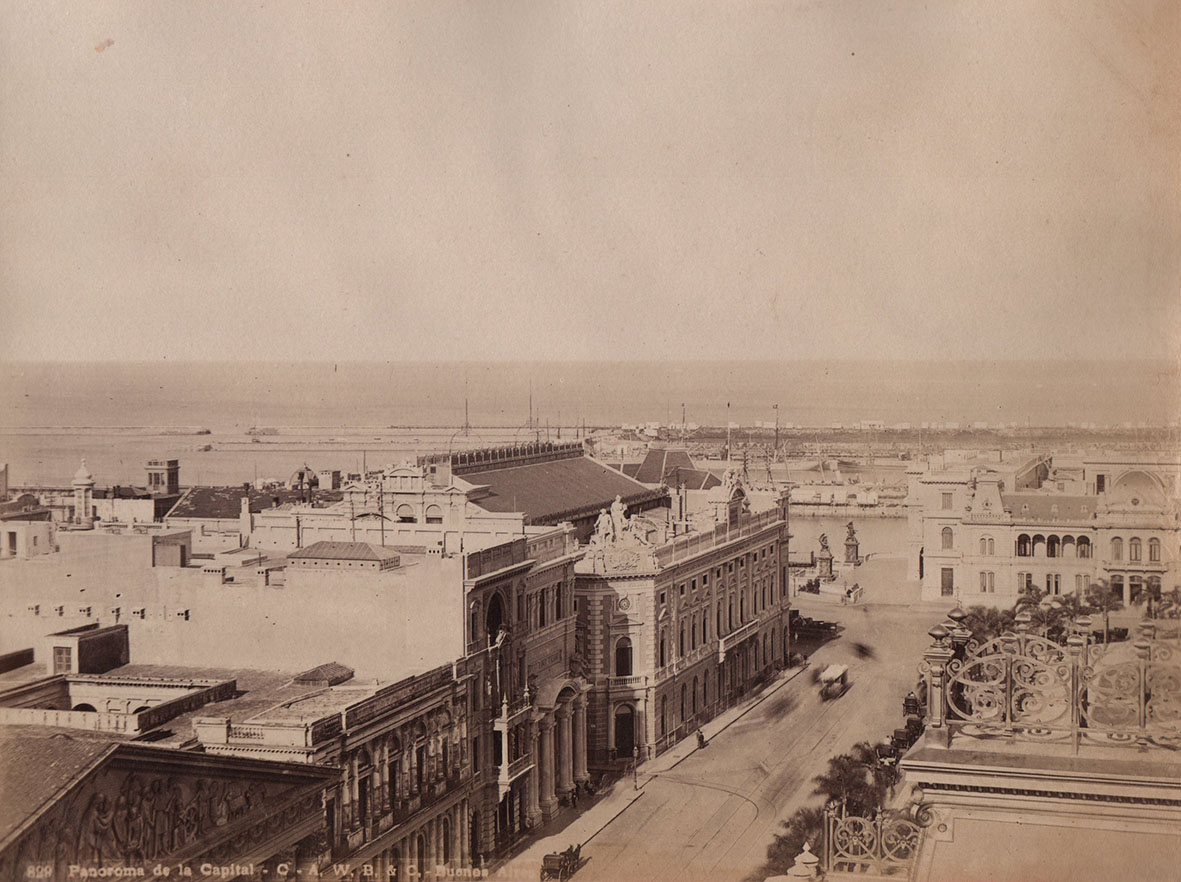Panorama of Buenos Aires city. Circa 1893.
Vintage albumen, with the indication written on the negative. Measures 16.8 x 22.2 cm / 6.61 x 8.74 in. Work in good condition. It is displayed framed.
The Anglo-Argentines Samuel (1844-1921) and Arturo Wood Boote (1861-1936) are considered to be the most prolific photographic editors in the country during the last third of the 19th century. Currently his thematic albums and even single copies with urban and rural views, customs and popular types, are kept in the main public and private collections, both in the country and abroad. More than a century away from these careful nineteenth-century editions, the high quality of their albumens have turned these brownish vintage works into coveted collector's items, as has been demonstrated by the bids at the recent auctions where they went on sale.
From the beginning of Argentine photography around the year 1843, the city of Buenos Aires concentrated the largest number of professional photographers nationwide; obviously in this saturated market the competition was fierce and, as is logical, only the best cameras of their time stood out; In this select platoon we must include the Boote brothers, who, far from the overwhelming portrait business, worked in the specialty of exterior views or "plein air".
The magnificent invention of Photography astride the Industrial Revolution, focused especially on urban records and with a predilection for large cities; The Boote brothers, attentive to this world trend, documented a modern turn-of-the-century Buenos Aires, and their favorite strategy was panoramic-type views, always taken from a certain height.
As a specific example today we present this magnificent "Panorama of the Capital" obtained from the top of a building on Bolívar street; albumin rescues part of the remodeled Plaza de Mayo -if we look closely we will see a long line of rental carriages waiting for their passengers-, the north wing of the Government House, the birth of Rivadavia street and a segment of the imposing Metropolitan Cathedral with its attached Curia. Crossing San Martín street is the old Colón Theater that functioned as such until September 13, 1888. In the background are the port buildings, various ships and the brownish Río de la Plata that is lost on the horizon. Horse-drawn trams give the City a cosmopolitan air.
Still, due to the long exposure times of these shots, we appreciate the "flapping" by the wind of the palm trees that border the Plaza and even some "ghostly shadows" on Rivadavia... that would indicate vehicles traveling at higher speeds. To the left and in front of the north esplanade of the Casa Rosada you can see a railway car belonging to the Central Station, which operated from 1872 until its destruction by fire in 1897. In short, a rare pearl of our heritage photography.
Abel Alexander
President of the Ibero-American Society for the History of Photography
S.O. XV-OOM
| AUTHOR | SAMUEL BOOTE |
|---|
Are you interested in selling some works?
Send us an email briefly indicating
which works you intend to put on sale, and we will respond. click here
Subscribe to our newsletter to be updated.
Check our Newsletters